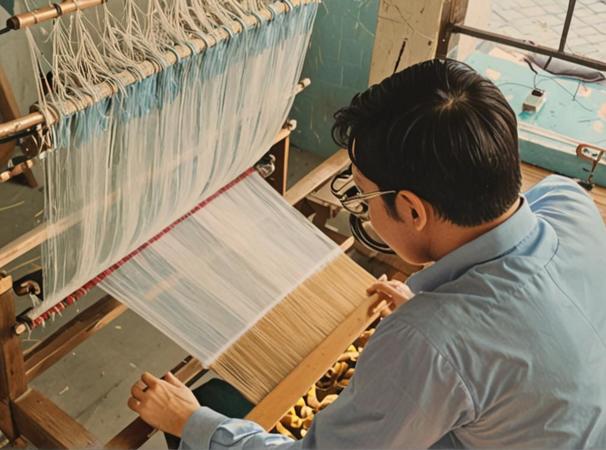
Zhuang Brocade: A Mastery of Traditional Craftsmanship in Guangxi
Zhuang Brocade, an exquisite handmade textile originating from Jingxi County, Guangxi Zhuang Autonomous Region, stands as a testament to the profound wisdom and artistic prowess of the Zhuang ethnic group. Recognized as a national-level intangible cultural heritage of China, it joins the ranks of Yun, Shu, and Song brocades as one of the Four Famous Brocades of ancient China. Renowned for its durability, intricate craftsmanship, distinctive patterns, and exquisite designs, Zhuang Brocade finds its place in attire, home decor, and souvenir markets.
The production process of Zhuang Brocade is a meticulous and elaborate endeavor, encompassing 15 distinct steps, each embodying the meticulous craftsmanship of the Zhuang people. It begins with spinning, where cotton is transformed into threads—the foundation of the brocade. Next, the weft threads are dyed in vibrant hues of red, yellow, blue, black, and green, tailored to the pattern's requirements, imbuing them with the ethnic group's signature colors. The threads are then starched with rice water or starch paste to enhance their strength and reduce wear during weaving.
Subsequent stages involve rolling, stretching, and combing the threads to ensure they are neatly arranged. This leads to threading the loom, a crucial task where the warp and weft threads are methodically strung onto the loom's frame and heddles. The loom, equipped with support systems, transmission mechanisms, and devices for separating and lifting warp threads, is pivotal in the weaving process. Notably, the traditional small wooden loom, or "bamboo cage loom," features a "flower cage" used to lift and weave intricate patterns, distinguishing Zhuang Brocade's weaving technique.
Pattern design is another vital aspect of Zhuang Brocade's craftsmanship. Designs broadly fall into three categories: simple geometric patterns woven in plain weave, layered designs combining geometric backgrounds with animal or plant motifs, and complex geometric compositions that intertwine various sizes and shapes, creating rhythmic and harmonious patterns. These designs reflect traditional customs, personal preferences, and market demands.
Among the most critical steps in weaving Zhuang Brocade are the setting up of the pattern (tie-up) and color selection. This requires extraordinary skill and experience to intertwine cotton warp threads with multicolored silk weft threads, resulting in breathtaking tapestries. The entire weaving process involves over 15 stages, including warp preparation, threading, reed insertion, warp tensioning, loom setup, dividing warp threads, pattern selection, shuttle loading, selvedge weaving, tie-up, warp feeding, color selection, shuttle passing, and beat-up. Crafting a traditional 50cm wide by 180cm long Zhuang Brocade of moderate complexity can take approximately 160 hours, with more intricate designs doubling or even tripling this timeframe.
Post-weaving, Zhuang Brocade undergoes finishing touches such as trimming edges and snipping loose threads to ensure a polished appearance. Quality control is rigorous, with constant inspections and adjustments made during weaving to guarantee clarity of patterns, vibrancy of colors, and structural integrity.
Zhuang Brocade is not merely a textile; it is a living example of ethnic textile craftsmanship in world history, embodying the Zhuang people's aspirations for a better life and rich cultural heritage. In the modern era, this ancient art form continues to thrive, becoming a symbol of Guangxi's cultural identity. With proper care, Zhuang Brocade retains its beauty and charm, allowing this traditional craft to flourish in the contemporary world.

